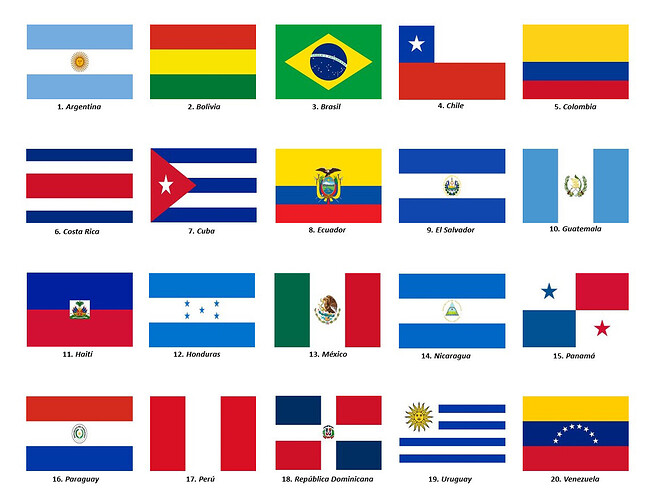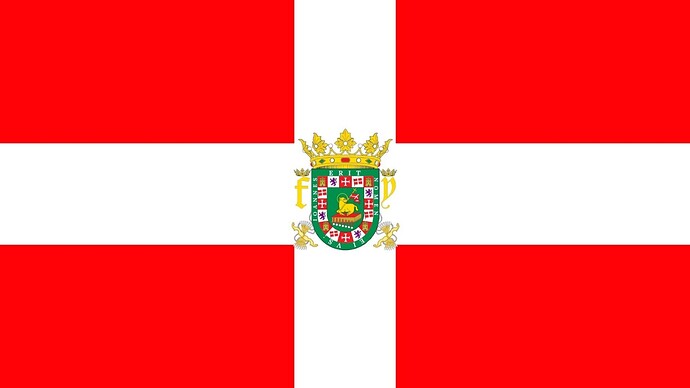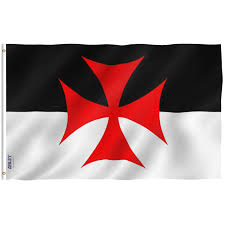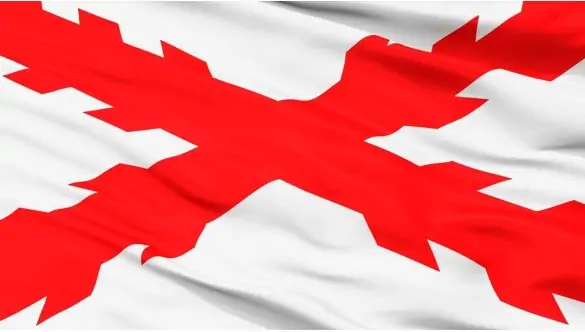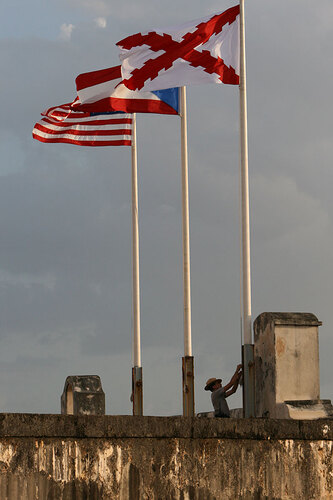What is missing from these flags?
Take a close look. You see vibrant colors, stars, and suns. But something fundamental, something that defined the civilization for 400 years, is gone. There is no Cross. No sign of the Blessed Mother. The Catholic faith, the very soul of Hispanic culture, has been scrubbed clean from these new national symbols.
This wasn’t an accident. It was a deliberate statement. It’s the quietest but clearest proof that what happened was more than a political split—it was a fight for the soul of a civilization.
Across the Hispanic world—from the Río Bravo, Patagonia, the Caribbean to the Iberian Peninsula—a growing counter-revolutionary movement argues that to understand our present, we must first dismantle the “Himalayas of lies” about our past. They assert a simple but powerful truth: politics is always the echo of culture. Every lasting political change is preceded by a victory in the realm of ideas, mentalities, and symbols. We cannot hope to reclaim our societies for Christ, rebuild the project of Hispanidad—a civilization built upon a Catholic foundation—without first winning this battle of meaning.
This brings me to the central historical falsehood: the myth of the “wars of independence.” We must be unequivocal: these were not wars of independence. True independence presupposes liberation from a foreign occupier, a situation that simply did not exist. The real invasion was in Spain itself, where from 1808, Napoleon’s revolutionary armies sought to impose a new order. The Spanish uprising, known as “la Afrancesada,” was a genuine war of independence—a defense of the nation’s Catholic soul against a foreign ideology.
So, what truly happened in the Americas? The accurate term is emancipation, but one that ignited a bitter civil war. These lands were not British-style colonies; they were viceroyalties, integral provinces of Spain. A person born in Lima or Mexico City was as Spanish as one born in Toledo or Barcelona. The conflict was a fratricidal struggle within a single political body, a family tragedy on a continental scale.
To understand this schism, we must acknowledge the decisive role of Freemasonry. The fact that pivotal figures like Simon Bolívar, San Martín, and O’Higgins were members of the Lautaro Lodge is crucial. Their proclamations spoke of expelling Spanish officials, but this was a tactical objective. The strategic goal was far more radical: to replace an entire civilizational paradigm.
The evidence is etched in the very fabric of the new republics:
- The Deeper Agenda: The immediate cause was political separation. The profound cause was a cultural and spiritual revolution. The goal was to dismantle the Catholic Monarchy—founded on religious unity—and replace it with a Masonic-inspired model based on popular sovereignty, the supremacy of human reason, and a secular state.
- The Symbols Don’t Lie: The flags are their confession. The ubiquitous equilateral triangle is a classic Masonic emblem of “Liberty, Equality, Fraternity.” The five-pointed star, or “pentalpha,” represents the light of reason illuminating the people. Their deliberate choice over traditional Catholic imagery was a declaration that the new order belonged to the Enlightenment.
- A War of Worlds: At its heart, the conflict was a clash of cosmologies. “Spain” represented the enduring idea of Christendom. The secessionists were fighting to replace Fides et Ratio (Faith and Reason) with the primacy of reason alone; to overthrow the King by the Grace of God for the sovereign citizen; and to shatter Catholic unity in favor of Masonic religious tolerance.
To reduce this struggle to “expelling Spain” is to miss the point entirely, just as reducing the French Revolution to the deposing of Louis XVI ignores the decapitation of the Ancien Régime itself. The military conflict was the means; the end was a metaphysical revolution.
To be Hispanic is to be fundamentally shaped by Roman Catholicism, in a manner similar to how Russian identity is inextricably linked to Orthodoxy. This is true even for individuals who are not personally religious; the faith is embedded within the cultural DNA—in the language, the traditions, the collective psyche, and the very calendar of life. For centuries, the Catholic Church provided the foundational answers to life’s essential questions, offering a unified worldview that structured society from the family to the governing institutions.
This deep-seated connection was the primary target of the Freemasonry-influenced liberal movements of the 18th and 19th centuries. While often draped in the language of independence from Spain, their core project was more profound: to decouple the population from Catholicism itself. The Church was seen as an obstacle to Enlightenment ideals of reason, secular government, and progress. This “Masonic Experiment” was an attempt to replace a theologically-grounded society with a rationally-constructed one, shifting the source of authority from the divine to the human. This created a fundamental schism, not just in politics, but in the very soul of those nations.
The flags are more than patriotic symbols; they are triumphant Masonic aprons draped over the body of a defeated Christendom. They answer the question we began with: What is missing is the Cross. Their patterns and stars, testify to the successful cultural coup that severed the soul of a civilization from its political body—a war for the soul of Hispanidad that, in many ways, is still being fought today.
Below is the true flag of San Juan Bautista, aka Puerto Rico. The beauty of our flag lies in its profound Christian symbolism. The red background evokes the blood of St. John the Baptist, a witness to the faith. The central white cross is a declaration of our Christian identity. In the middle, the shield with the Lamb of God represents Christ Himself, while the book with the seven seals point to the Book of Revelation and the divine prophecy of a renewed Christendom. This symbolism clarifies San Juan true mission. We have long been called the “Key to the Americas,” but this was never a call to material prosperity. It is a spiritual vocation—in the eyes of Catholics, what this flag represents is the key that unlocks the door for the restoration of Christian civilization in the Americas.
What gives me hope today is the apparent intellectual decline of the Masonic ‘Cult of Reason.’ Their influence is waning, and their grip on our history is failing—and it starts by dismantling their foundational lies. I see it happening very strongly in Central and South America.
For example, in my corner of the world, the falsehood that San Juan was just a colony. Folks we were never a colony. The historical record tells a different story: San Juan was a pivotal administrative and religious capital. It was home to the New World’s first school and its first diocese (established in 1511), with Alonso Manso consecrated as the first Bishop of the Americas in 1512. By the 17th century, men born in San Juan were governing territories from Florida, Cuba, Venezuela, Dominican Republic, and leading armies as far away as Italy and the Philippines.
For me, this isn’t abstract history; it’s a living family tradition. We have a long, unbroken line of priests and military men, a legacy that stretched right into the 20th century. What often goes unnoticed—by people in the US, Europe, and around the world—is the reality that exists behind the TV news, the newspaper headlines, the Masonic symbols, and the failing politicians: that very old, very resilient Catholic civilizational bloc is still alive and well in Hispanic America. I very strongly believe they are key to fix many of the problems including all that illegal immigration in the US. They don’t have political leadership but they are organizing. Is literally a counter revolution.

